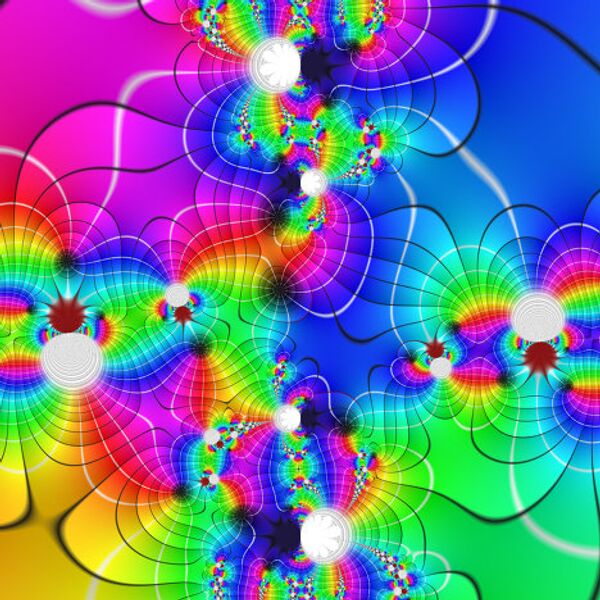A photograph of a mouse's retina, the "Cthulhu" cancer cell, a "cosmic network", a computer game Foldit and a video in which a living cell is broken down into its component parts, were the winners in a competition to find the best artistic work describing scientific phenomena or processes, run by Science magazine.

1/9
© Miguel A. Aragon Calvo, Julieta Aguilera, Mark SubbaRao PhD
The winner in the photography category was Bryan Jones from the University of Utah in Salt Lake City, for his photograph in which he captures a slice of the retina of a laboratory mouse. For clarity, the neurologist gave each layer of light-sensitive cells its own color, which makes the eye look like multi-layered colored candy.

2/9
© Emiko Paul, Quade Paul, Echo Medical Media; Ron Gamble, UAB Insight
The award for the best scientific illustration of 2011 went to the picture by Emico and Quade Paul from the Echo Medical Media center in Conifer and their colleague Ron Gamble from the University of Alabama in Birmingham. The scientists used a three-dimensional image editor and Adobe Photoshop to illustrate how antibodies attack breast cancer tumor cells. The scientists made the cancer cells very similar to Cthulhu, a chthonian deity of the underworld in the books by Howard Lovecraft.

3/9
© Seth Cooper, David Baker, Zoran Popović, Firas Khatib, Jeff Flatten, Kefan Xu, Dun-Yu Hsiao, Riley Adams/ Center for Game Science at University of Washington
The computer game Foldit won first prize in the interactive game category. The game is designed to help simulate the folding process of protein molecules and detect all possible structural configurations. This program was developed at the University of Washington. The over 200,000 people who have been playing the game since May 2008 have made a significant contribution to the study of protein function.

4/9
© Photo : Babak Anasori, Michael Naguib, Yury Gogotsi, Michel W. Barsoum, Drexel University
Ti3C2, two-dimensional layers of titanium carbide, is another substance which is similar to graphene, forming monatomic layers. The photograph won the People's Choice Award.

5/9
© Photo : Robert Rock Belliveau MD
A cucumber weapon as a defense against herbivorous animals. The microscopic hairs on the cucumber skin, the tips of which are 40 times sharper than those of a sewing needle, and whose bubbles contain the toxic, bitter substance cucurbitacin, is the bitterest substance known to scientists. A human being is capable of detecting its presence even in a solution containing only a one-billionth part of the substance.

6/9
© Photo : Andrew Noske, Thomas Deerinck, National Center for Microscopy & Imaging Research, University of California, San Diego; Horng Ou, Clodagh O’Shea, Salk Institute
A three-dimensional image of the process of cell division, mitosis. The cell membrane is shown in blue and the chromosomes are colored yellow. A fluorescent protein MiniSOG is shown in the bubble, which enables the scientists to study the division process in detail. This work won the People's Choice Award in the illustration category.

7/9
© Photo : Joel Brehm, University of Nebraska-Lincoln Office of Research and Economic Development
A three-dimensional image of carbon nanotubes of variable diameter, which can be used to produce transistors and sensors with minimal heat generation.

8/9
© Photo : Konrad Polthier, Konstantin Poelke, Free University of Berlin
An image of the function of complex variables using the domain coloring technique, where each number is assigned its own color. This method significantly increases our understanding of how these functions work.

9/9
© Photo : Jeremy Friedberg (Game designer/producer), Nicole Husain (Content & Writing), Ian Wood (Programming), Genevieve Brydson (Project Management), Wensi Sheng (3D graphics, Compositing/post-production), Lorraine Trecroce (3D graphics, Project Management), Kariane St-Denis (French Translation), David Rowe (Post-production, programming, Testing), Ruby Pajares (UI Design), Arij Al Chawaf (Content & Writing), Shaun Rana (Graphics) and Nancy Reilly (Testing), Spongelab Interactive
An interactive designer of the human body, Build-a-Body, which is designed to help provide a detailed study of the anatomy and physiology of the human body.

